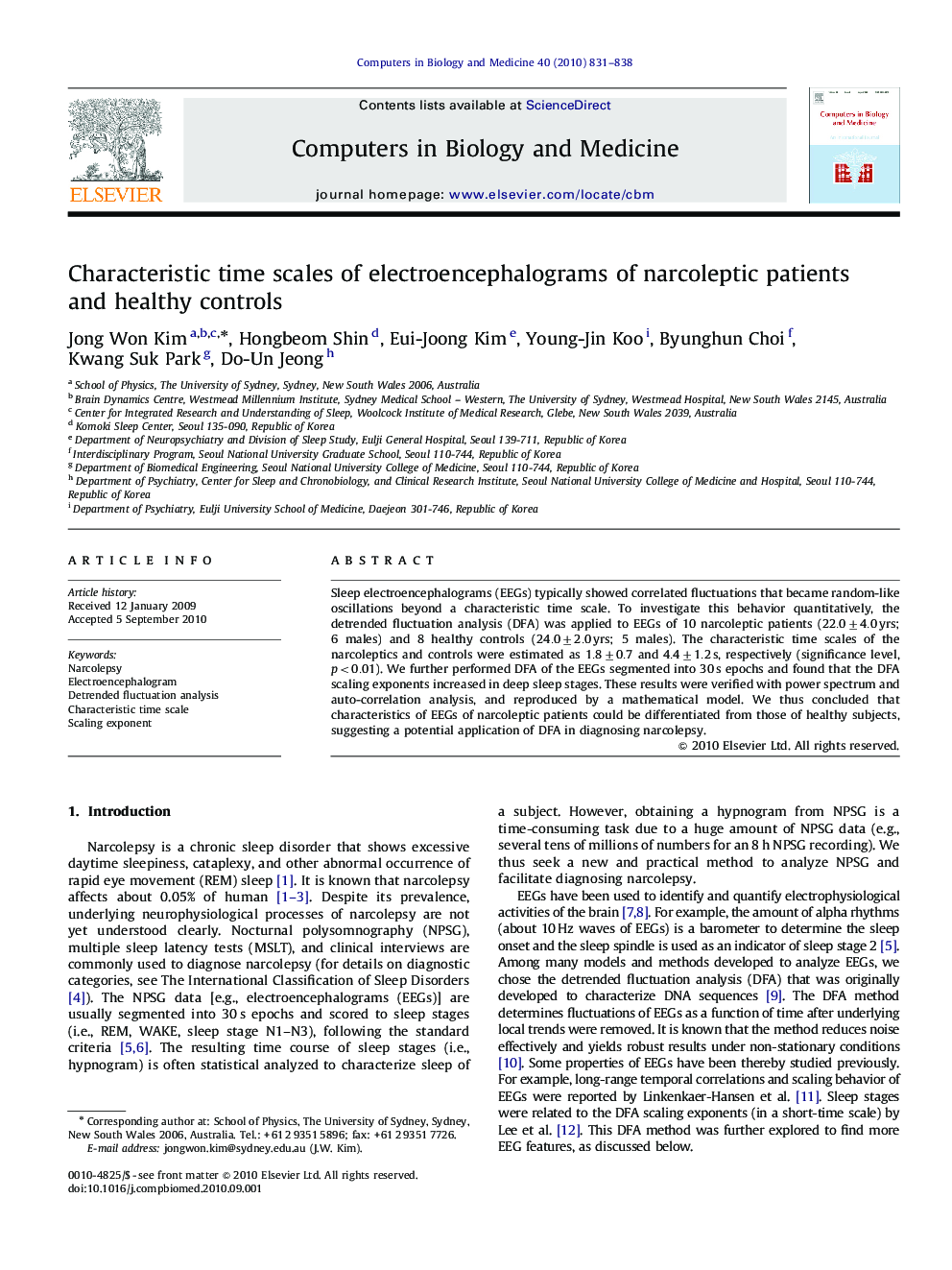| Article ID | Journal | Published Year | Pages | File Type |
|---|---|---|---|---|
| 505800 | Computers in Biology and Medicine | 2010 | 8 Pages |
Sleep electroencephalograms (EEGs) typically showed correlated fluctuations that became random-like oscillations beyond a characteristic time scale. To investigate this behavior quantitatively, the detrended fluctuation analysis (DFA) was applied to EEGs of 10 narcoleptic patients (22.0±4.0yrs; 6 males) and 8 healthy controls (24.0±2.0yrs; 5 males). The characteristic time scales of the narcoleptics and controls were estimated as 1.8±0.71.8±0.7 and 4.4±1.2s, respectively (significance level, p<0.01p<0.01). We further performed DFA of the EEGs segmented into 30 s epochs and found that the DFA scaling exponents increased in deep sleep stages. These results were verified with power spectrum and auto-correlation analysis, and reproduced by a mathematical model. We thus concluded that characteristics of EEGs of narcoleptic patients could be differentiated from those of healthy subjects, suggesting a potential application of DFA in diagnosing narcolepsy.
